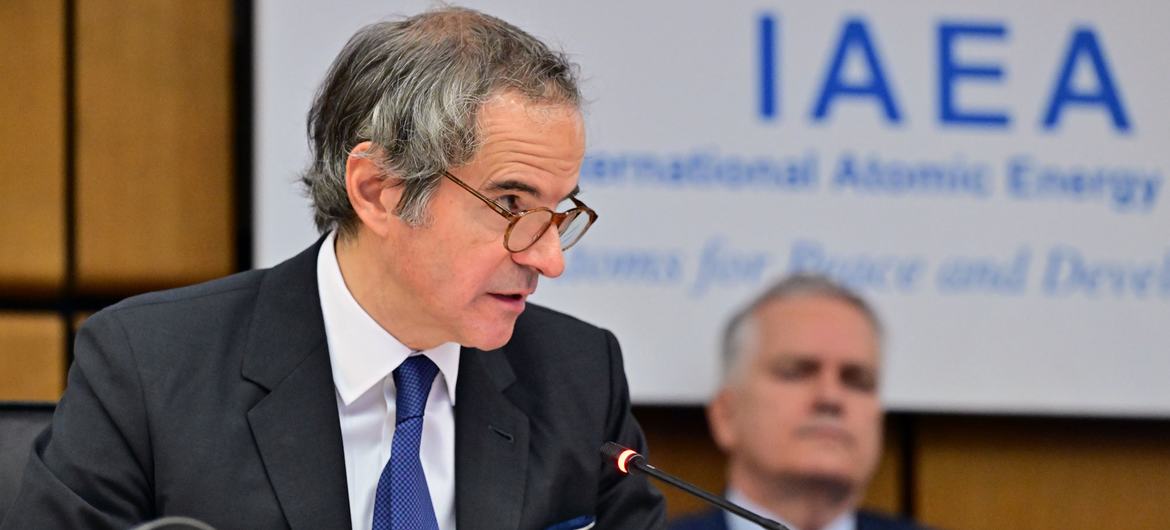Don't Miss Our Holiday offers - up to 50% OFF! & More..


Iran monitoring, promoting the peaceful use of nuclear energy: a look at Iaaa’s role – eSHOP24X7
The International Nuclear Energy Agency (OIEA) was established in 1957 at a time when there was a deep concern worldwide for the use of nuclear weapons for the first time and the propagation of nuclear technology.
As an autonomous institution of the United Nations System, OIEA not only promotes the peaceful use of nuclear energy, but also active in several fields, such as food security, cancer control and sustainable development.
Another important responsibility of the unwanted agency is the framework for the ‘Nuclear Safeguard’ agreement. These agreements are voluntarily made by member countries and aim to avoid the spread of nuclear weapons.
For this, the OIEA is confirmed independently if the countries are following their unreal nuclear commitments. By 2024, around 182 countries have concluded these nuclear safety agreements with the IAEA.
The general director of the OIEA, Rafl Gossi, while heading to the administrative board of the agency on June 9, presented some anxious facts about Iran’s nuclear activities, which raised new questions about the adherence to global nuclear agreements by Iran.
Gossi told the Board of 35 countries: “Iran has not repeatedly answered IAA’s questions, or has not given technically reliable answers.”
He also said that Iran has tried to “clean” the places that the agency has now identified, assuming that they were part of an organized (structured) nuclear program in the early 2000s.


The general director of the OIEA, Rafael Mariano Gossi, made a statement on Israel military attacks in nuclear facilities in Iran.
According to the general director Gossi, “Iran could not ensure until I will be cooperated to solve their agency related to pending security problems.
He expressed concern that Iran is being quickly stored by the enriched uranium of Iran more than 400 kg, which can have serious consequences, since it is one of the main ingredients necessary to make atomic bombs.
From the statement given to the Board, it is clear how broad and decisive is the role of the OIEA in the context of Iran. It can be clearly divided into four main areas:
1. Monitoring
The OIEA uses security agreements under the treaty of nuclear indispension (TNP), which is an important step with the intention of preventing the propagation of nuclear weapons. Most security agreements are made with countries that do not have nuclear weapons.
Although India, Pakistan and Israel are not members of NPT, with them, OIEA has made agreements based on selected requirements, points, based on which security measures are implemented.
Iran is part of this treaty as a country of nuclear weapons, and a prohibition has been imposed to obtain its nuclear weapons. In addition, it is necessary that the OIEA will be allowed to verify and confirm all the nuclear materials and activities, including inspection to obtain immediate information.
The non -backed agency regularly inspects Iran’s nuclear centers, including places like Natanz, Fordo and Isfahan. Its purpose is to ensure that the nuclear material is used only for peaceful purposes and it is not badly used to make weapons.
On June 9, Director General Gossi said three sites such as Germina, Marivan and Turkuzabad have not received a reliable clarification for the presence of man -made uranium particles. Information about these centers did not give previously.


Rafael Gossi (on screen), general director of the International Atomic Energy Agency (OIEA), informing the United Nations Security Council meeting on Iran.
2. Provide information
OIEA regularly provides information on Iran’s nuclear activities (and other countries) to its administrative board.
For this, the data is collected by inspection, monitoring equipment, environmental samples and satellite images and then prepare technical reports. In cases of countries that live under special supervision, such as Iran cases, these reports are generally released every three months.
If the member country of the TNP with Iran or any nuclear weapon does not follow the terms of the IEA (such as obstructing the inspection or not interpreting the presence of uranium particles), the agency can transmit the information to the agency to the United Nations Agency.
As a result, other steps can be taken, including diplomatic pressure, restriction or call for conversations in this regard.
3. Diplomat Code
The International Nuclear Energy Agency often appeals to the detection of diplomatic solutions and also emphasizes Samvad’s importance to solve questions related to Iran’s nuclear intention.
The general director Gossi Gossi has maintained direct contact with Iranian officials and international interested parties to maintain the exchange and transparency of constant information.
Going to the Security Council on June 13, Director General Gossi said that the OIEA is in constant contact with the Iranian nuclear regulatory authority to evaluate its broad impacts on the state of the affected places and the nuclear safety and rescue measures.


As part of his two -day visit to Iran, the general director of the IAEA, Rafael Mariano Gossi, visited the enrichment sites of Natanz and Fordo.
4. Security and rescue measures maintained
This is a very important part of Oiea’s wide mission, whose objective is to prevent nuclear accidents and ensure that common people and the environment are protected and nuclear energy is used only for peaceful purposes.
The OIEA team, together with Iranian officials, ensures that the operation in nuclear sites such as Natanz, Fordo and Isfahan work safely. For this, the designs of these centers and activities are reviewed there, the radiation safety measures are monitored and also evaluate the emergency preparation status.
The OIEA confirmed after the Israeli attacks in June 2025 that the Nonz plant was affected by them, but there has not been an increase in the radiation levels there.
However, the agency not supported by the UN clarified that the military attack in any nuclear site is a violation of international law and this can cause serious threats to security and the environment.







